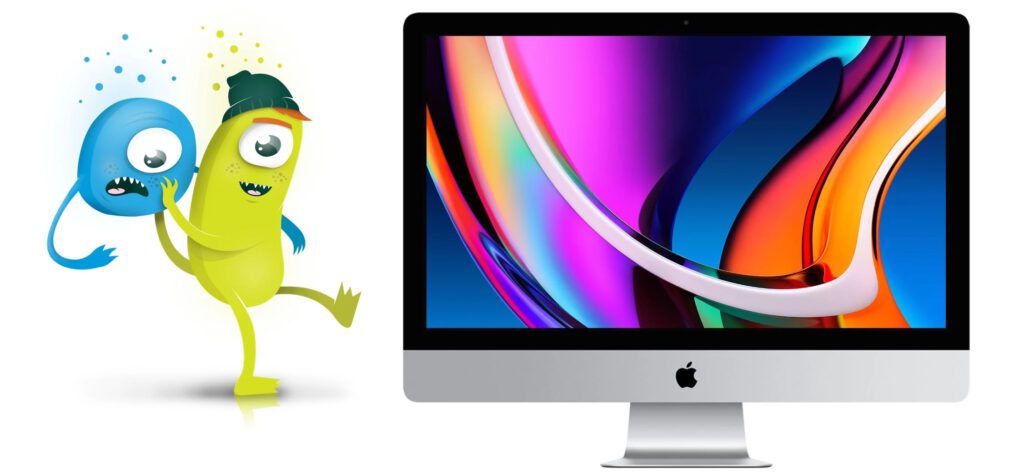If you ever receive a message on your MacBook that tells you something like “the item you have downloaded from the internet is malware?” In this scenario, the safest and first thing to do is put the suspicious item in the Trash and then empty the Trash.
Malware is malicious software that can invade, damage, or disable your MacBook by taking control of your device’s operations. The intent behind the malware can be about ransoming, jeopardizing your ability to use your Mac device or anything like that.
Important note: Malware does not cause any physical harm to your device. But it can steal or delete your data, hijack your Mac’s core functions, or even spy on your device without your permission.

Signs of Malware on Your MacBook
Malware on your MacBook may show different symptoms, including:
- Slow performance as malware often hogs your device’s memory (RAM).
- Unexpected crashing or freezing, which indicates that your device is infected with malware.
- Unexplained decrease in storage space.
- Your browser’s homepage changes randomly.
- Browser redirects to unsafe websites.
- You see annoying pop-ups whenever you use your MacBook.
- Unusual error messages informing you of corrupted files
- Fake virus alerts
- Programs running and closing without your knowledge or permission
- Suspicious applications
- Unexplained increase in your internet usage
- Suspicious short file
- Ransom demands
In addition to these, there could be other signs that might indicate the presence of malware and other viruses on your MacBook. Regardless of the reason, it is important to address any suspicious activity or item as soon as you notice it.
Ways to Protect Your MacBook from Malware
The best thing about macOS is that these devices are less likely to be infected by malware. But if it does, there are several ways to protect your MacBook from malware.
Use a strong password: The first thing is choosing a strong password for your MacBook to add a layer of protection. It is worth noting that without a strong password, nothing on your device is secure. Anyone can easily gain access to your data, email, photos, and more. It is true that macOS has many security features that help safeguard your data, but it is still possible to access it without a strong password.
Change lock screen settings: MacBooks allow you to set the display to turn off after inactivity for a certain time. Please note that if the screen saver does not start for half an hour and your device waits another 15 minutes before asking for a password, your device will remain unprotected for 45 minutes.
Use Apple’s password manager: Remembering passwords can be frustrating. With this understanding, Apple offers a secure way to remember and access all your passwords with ease. Apple iCloud Keychain is a built-in password manager that is compatible with all Apple devices. The tool will log you into all your services and software.
Keep your macOS updated: All major software programs have their own operating systems, and each come with their own antivirus defenses. Yet, they still need to be updated on a regular basis to address new potential vulnerabilities. While restarting your system and upgrading to the latest version is not necessary, it is important to implement updates to safeguard your device from malware and other viruses.
Keep your personal information protected: In the tech-driven world, it is challenging to keep your sensitive personal information safe and protected from malicious access. Today, all companies reach out to keep your data in digital forms, like your address, phone number, usernames, social security number, etc. Despite strong encryption technology, it is your own responsibility to do your best to keep your data protected. So, take all measures to keep your personal information protected.
Choose secure encrypted networks only: Mass adoption of wireless technology has put our personal information over public networks, and these networks are not as protected as we think.
Our MacBook is connected to the internet, files, and printers constantly, making things easier for hackers who keep preying on internet traffic. So, make sure you always avoid using your MacBook on a public network as and when possible. Instead, use the safest network available around you. Alternatively, you can also use a virtual private network (VPN) to keep yourself protected and anonymous online.
Backup regularly: It is important to regularly backup your data to be on the safe side. In case you lose your data for any reason, you can always retrieve it if you have taken the backup. So, even in the case of a malware attack, you will never lose your important files or data.
Did you notice malware on your MacBook? Have you tried all the above-listed methods, but nothing works? Don’t worry! In this case, a professional MacBook technician should help you. Contact a reputable MacBook technician who can help fix the issue while protecting your data.


